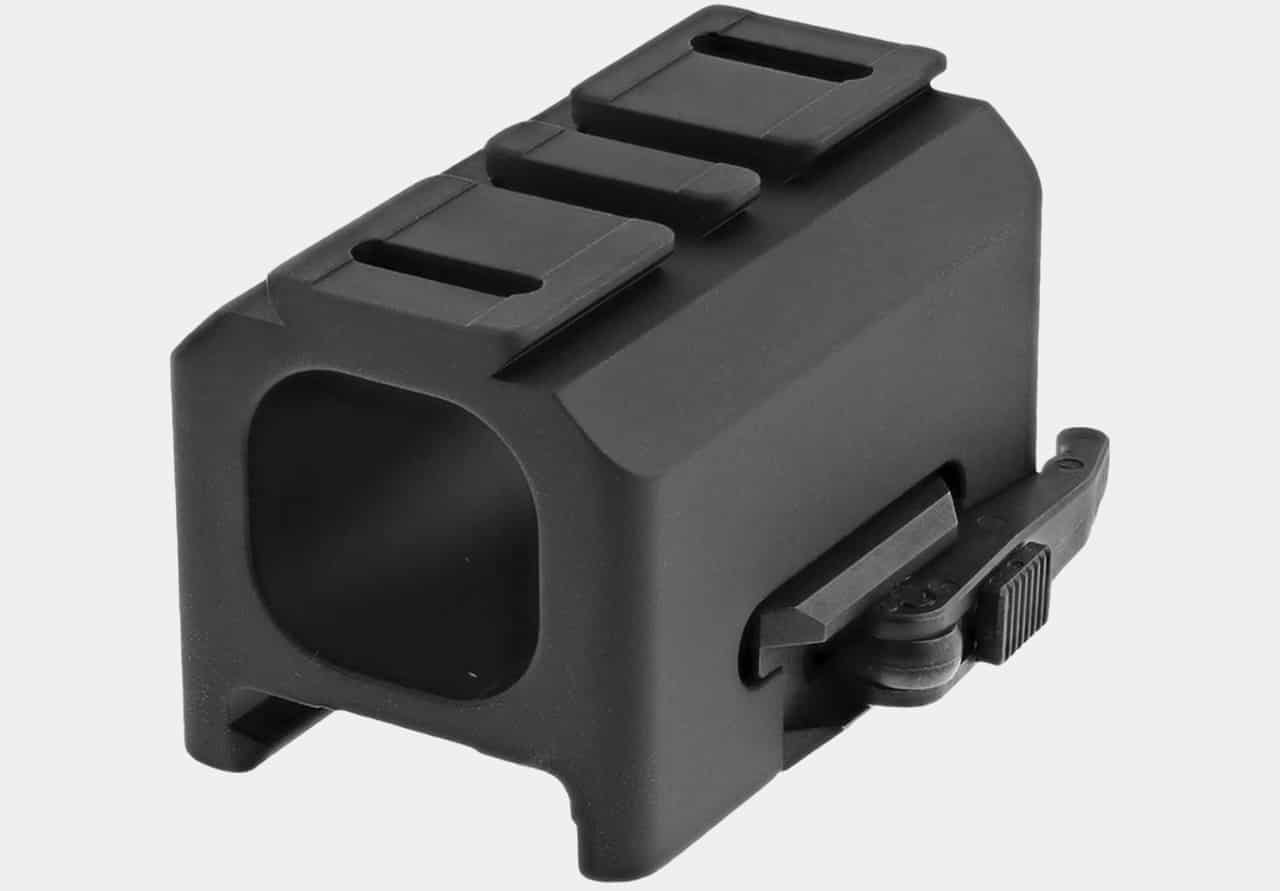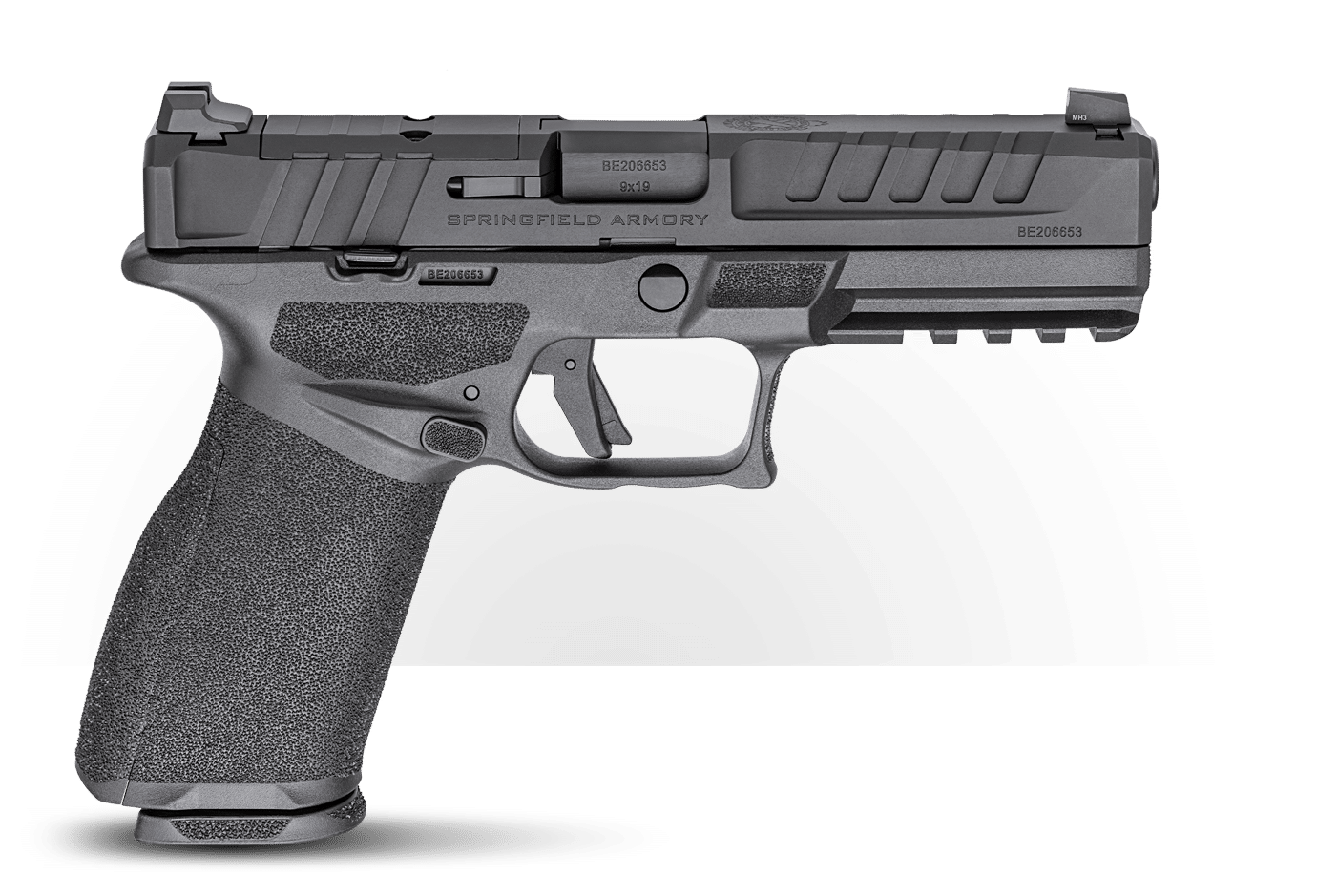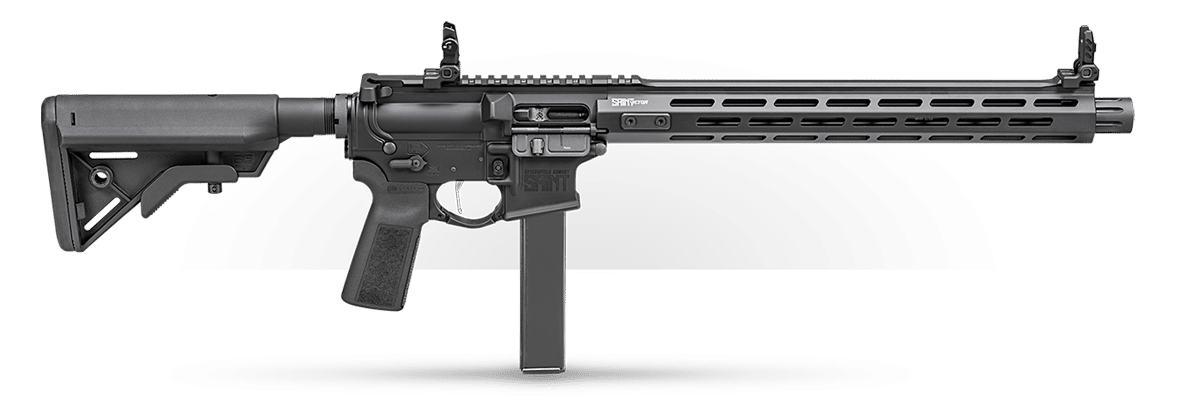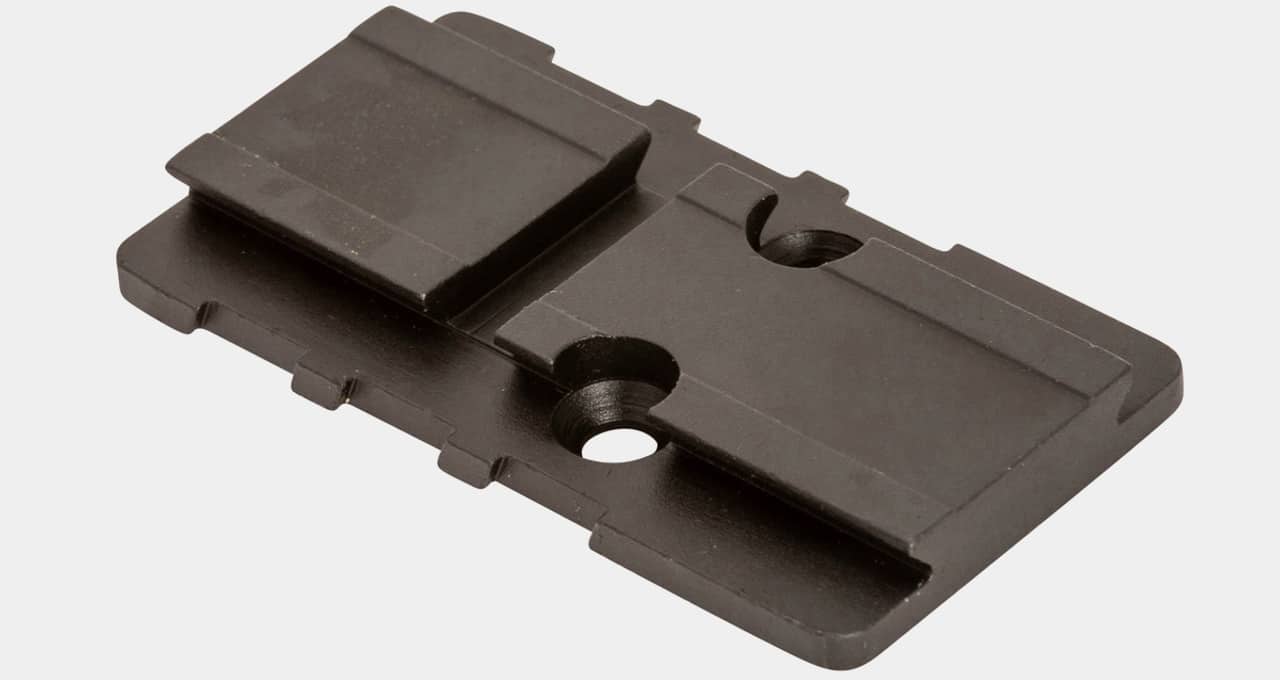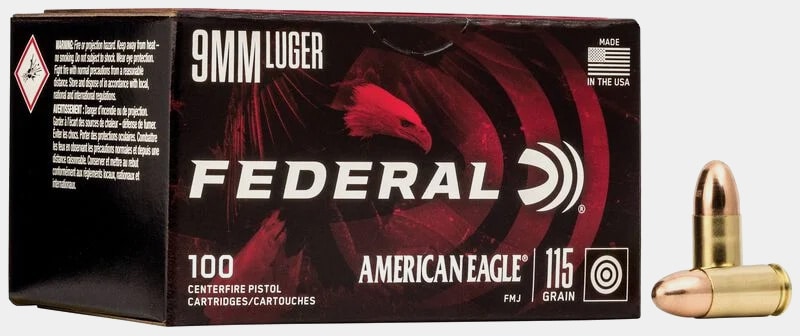Aimpoint ACRO P-2 Review: Rugged Red Dot Sight
November 22nd, 2024
7 minute read
In this article, Robert Sadowski reviews the Aimpoint ACRO P-2 red dot sight. Aimpoint introduced its first red dot sight in 1974, and the company continues to innovate with a range of optics for hunters, sports shooters, law enforcement officers and military personnel. Aimpoint provided a loaner ACRO P-2 to the author for this review.
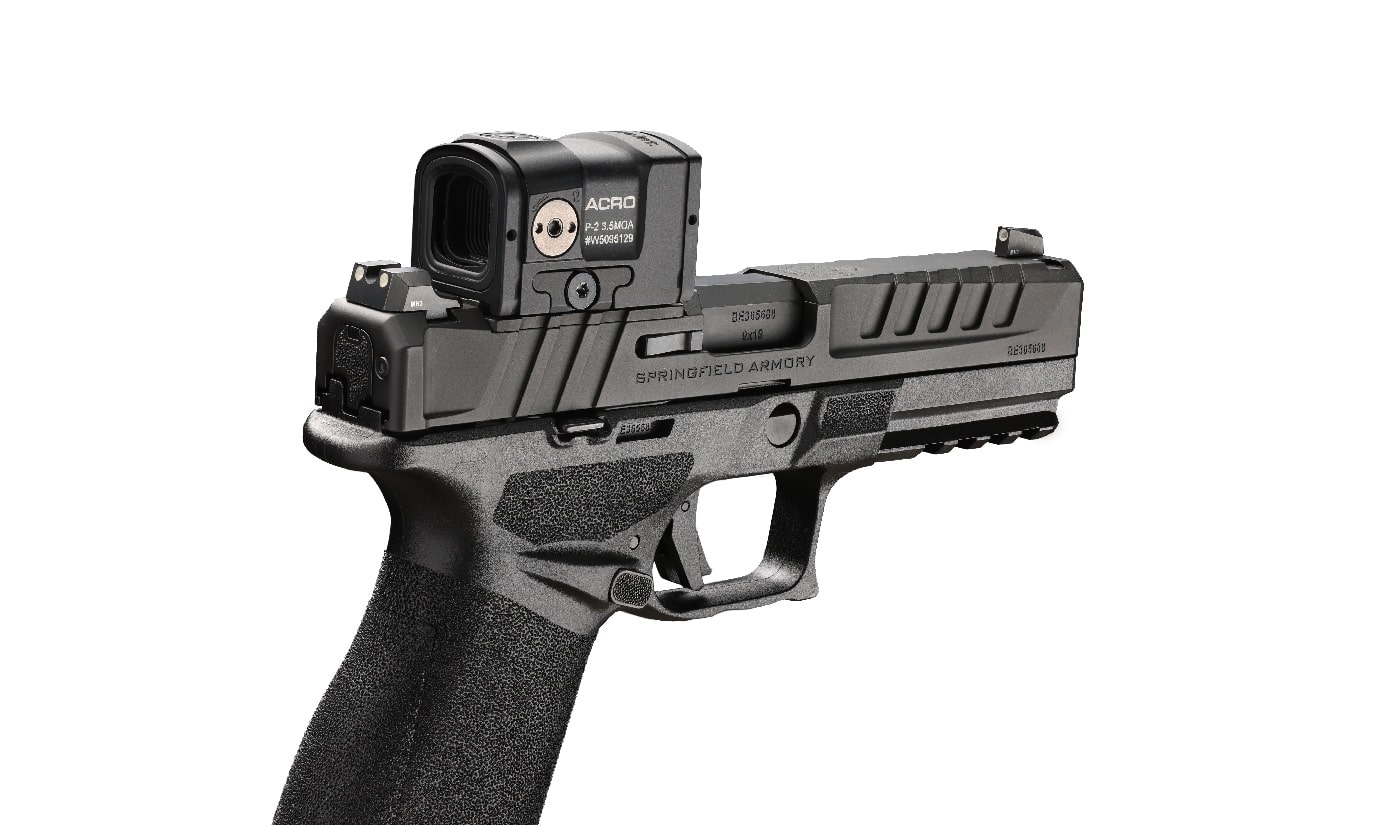
Red dot sights simply make shooting a firearm accurately simple. No need to align a front blade in a rear notch or a post in an aperture. Put the dot on target. Then, fire. It’s simple, fast and effective. And a terrific example of this simple effectiveness is the Aimpoint ACRO (Advanced Compact Reflex Optic) P-2 red dot optic.
What Is the ACRO P-2?
Although it was designed primarily for handguns, the ACRO P-2 is equally well suited on a rifle or a shotgun. For this review, I tested the ACRO P-2 on an Springfield Armory Echelon semi-automatic pistol and on a SAINT Victor carbine, both chambered for the 9x19mm Parabellum cartridge, to get a feel for how the optic performs on both platforms.
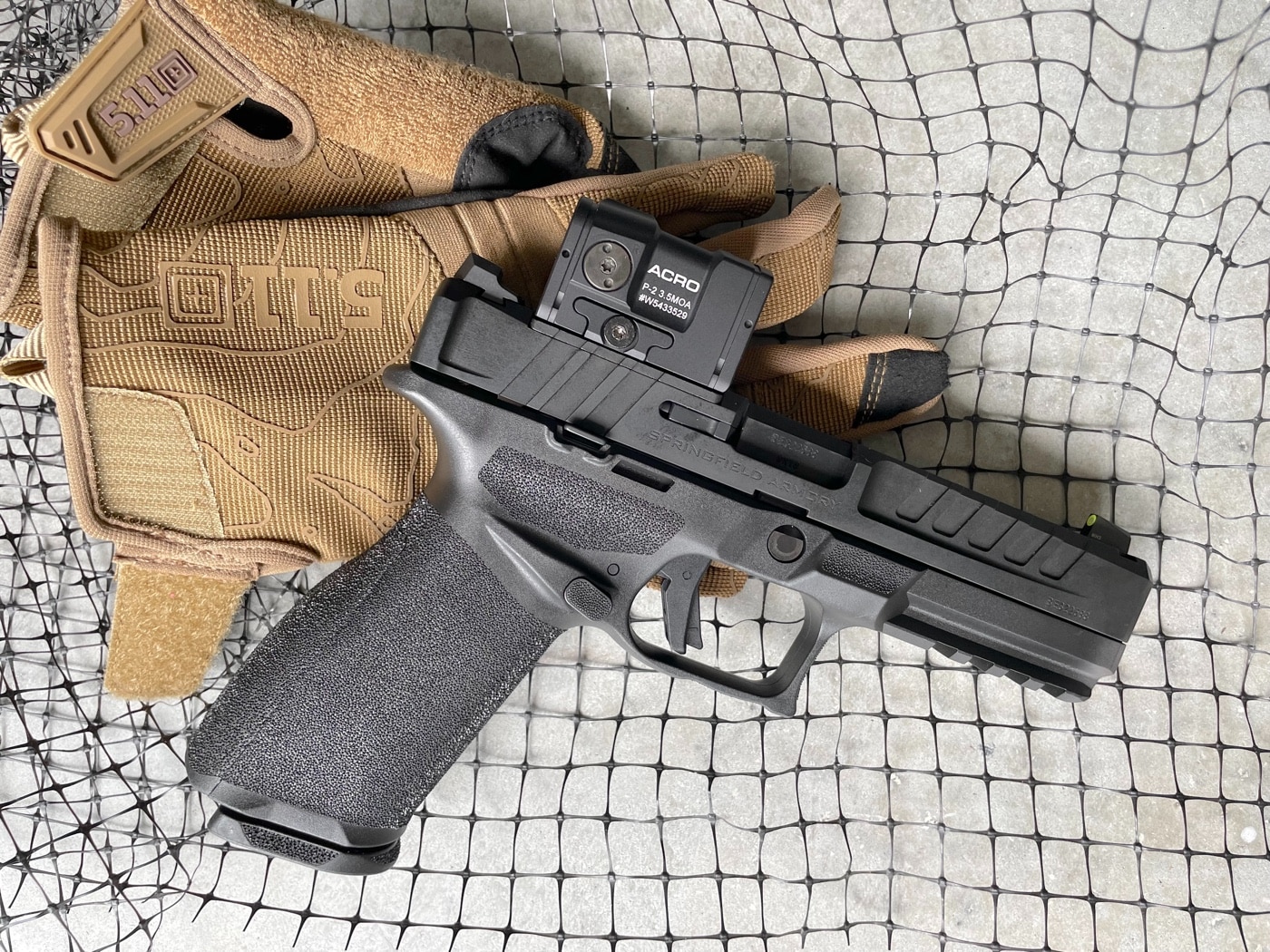
Small and lightweight, the ACRO P-2 optic is a closed-emitter sight. While an open-emitter red dot has a projecting LED (light-emitting diode) that is exposed to the elements, closed-emitter optics have the LED encased and protected inside the sight. The result is an ultra-reliable and durable design.
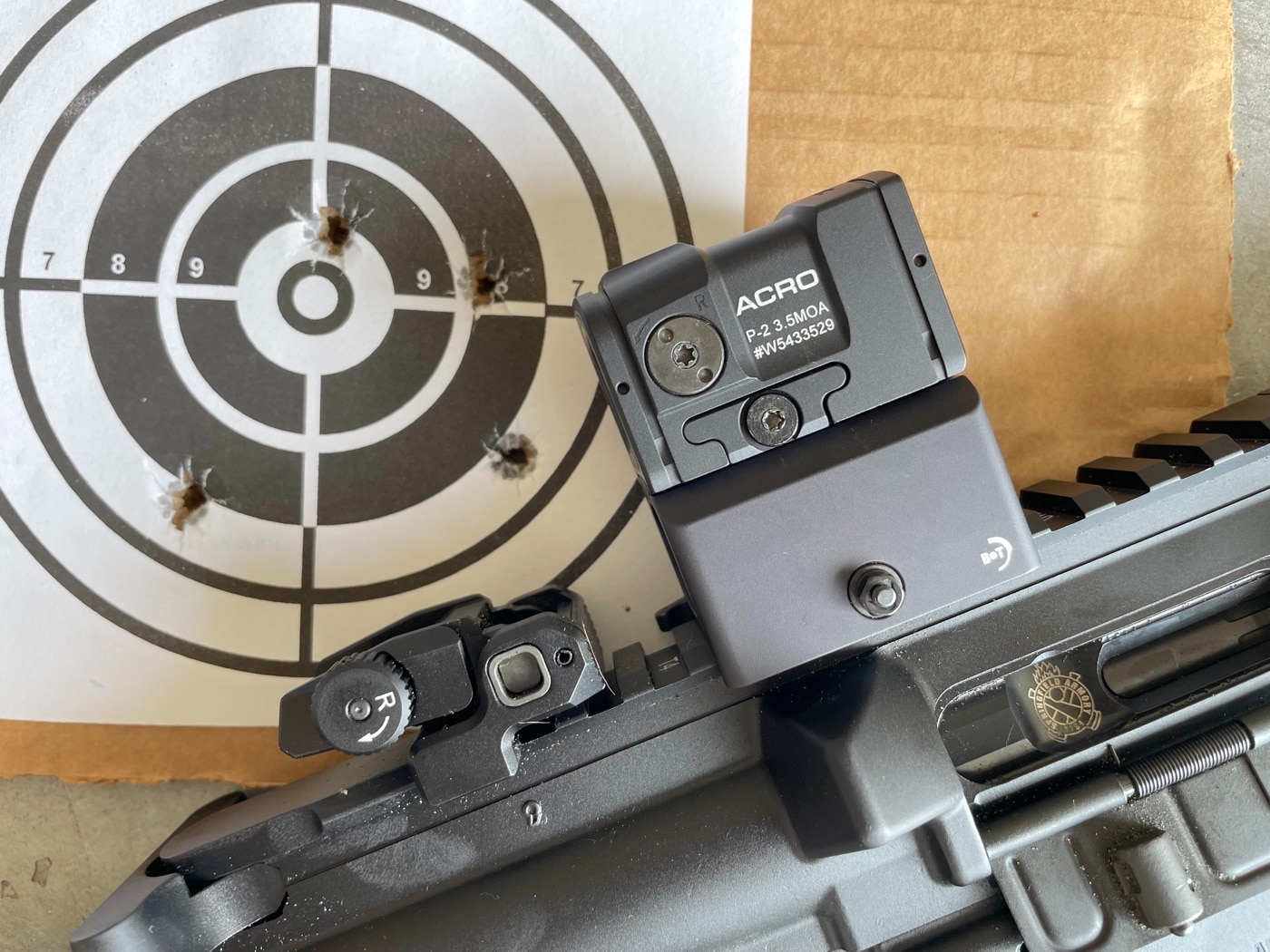
During my testing, I tossed it in the dirt, sprayed it with water and dropped it on the ground like I was angry with it. However, it never seemed to miss a beat. All I had to do was pick it up and use it. It worked whether it was dusty or wet, or both. It is a rugged optic.
Top Features of the ACRO P-2 Optic
Considering the intended use of the P-2, the dot is always on. When you draw, the dot is ready for you. No need to turn it on or off, but you can if you want to. The dot can be turned off by pressing and holding the bottom button of the two control buttons. When you turn it back on, it will be at level 7 brightness. Battery life is rated at 50,000 hours on an easy-to-find single CR2032 battery.
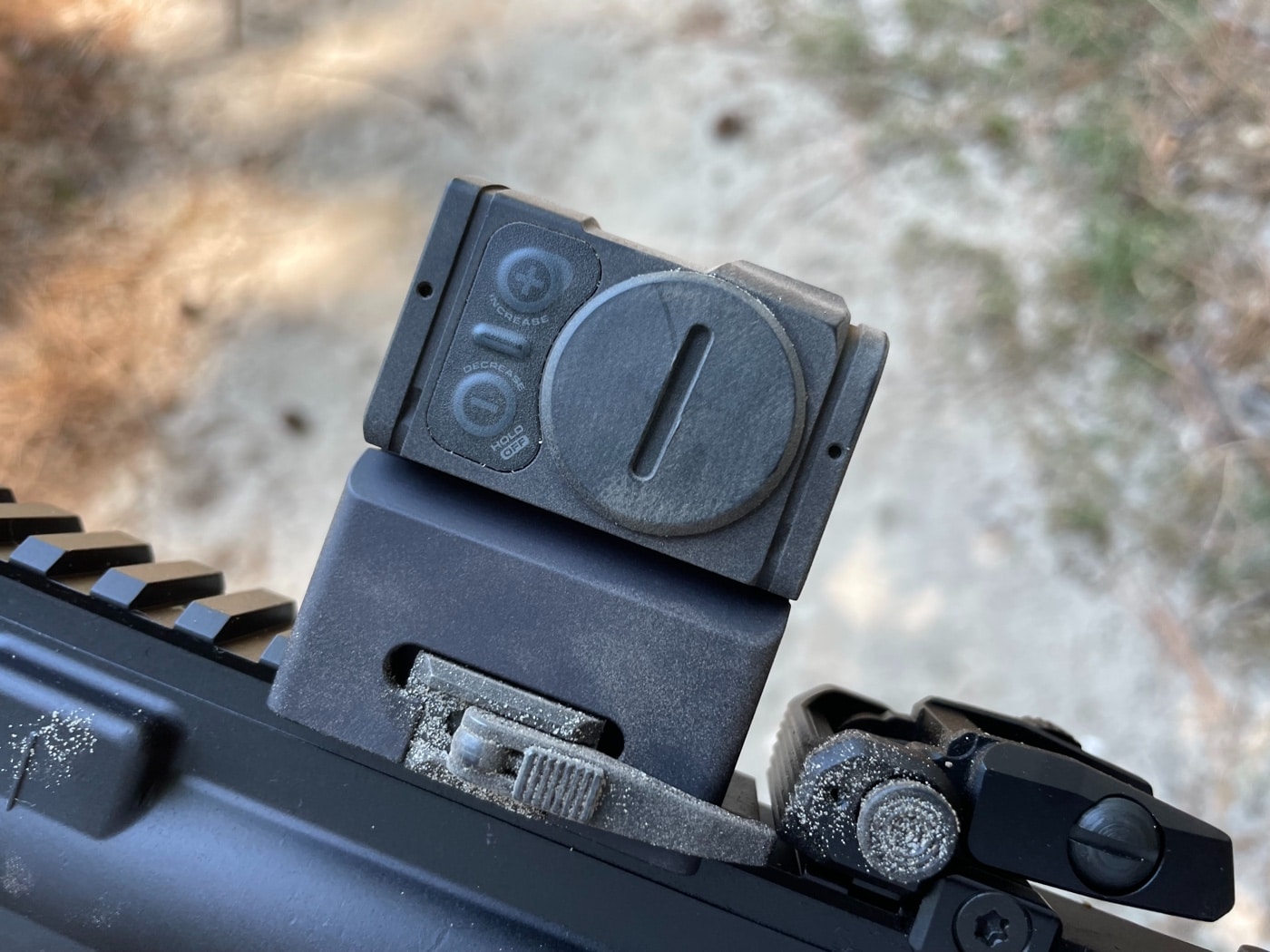
This leads to me to the dot itself. The dot reticle size is 3.5 MOA, which is a good size for either a handgun or a rifle for use from 5 to 50 yards. Up close, the 3.5 MOA dot allows for fast and precise shot placement. At distance, such as when it is mounted on a rifle, the 3.5 MOA dot does not obscure the target at reasonable distances.
I like that dot brightness can be manually adjusted. Optics with dot brightness that adjusts automatically sounds good and can be for certain applications, but in the brightness of an afternoon sun I want to be sure I can see the dot. The same goes for scenarios in the dark. Being able to adjust it gives me the control that I like.
For nighttime work, I adjusted the dot in the 5- to 6-level range. In the brightness of the day, I cranked it up brighter. I also found myself adjusting the dot’s brightness lower when I placed the Echelon in the nightstand so it would be ready if I needed it at night.
The ACRO has 10 total brightness settings. The four lowest settings are for use with a night-vision device, and the remaining six settings are for use in daylight. Buttons on the right side are used to adjust intensity, and the buttons are sized and positioned correctly for my needs. The top button marked + increases brightness and the bottom button marked — decreases brightness. All intuitive.
I wore gloves at times and found the buttons easy to operate with both bare or gloved hands. I found you can adjust the brightness on the fly using the thumb of your support hand if you are a right-handed shooter.
Aimpoint ACRO P-2 Specifications
Here are the specifications on the ACRO P-2 red dot sight:
| Dot Size | 3.5 MOA |
| Night Vision Compatible? | Yes |
| Eye Relief | Unlimited |
| Dot Color | Red |
| Parallax | Operationally Parallax Free |
| Magnification | 1x |
| Battery | CR2032 |
| Battery Life | ~50,000 hours |
| Water Resistance | Submersible to 35 meters |
| Housing | 7075-T6 aluminum with anodized finish |
Mounting the Red Dot Sight
Since the ACRO P-2 is a closed-emitter sight, it mounts differently than an open-emitter red dot. The base on an open-emitter red dot allows two screws to be used to mount to a pistol slide or an AR mount. Due to the design of the body of the ACRO, it uses a clamp that mounts to an adapter plate, and the plate mounts to the pistol or the AR mount.
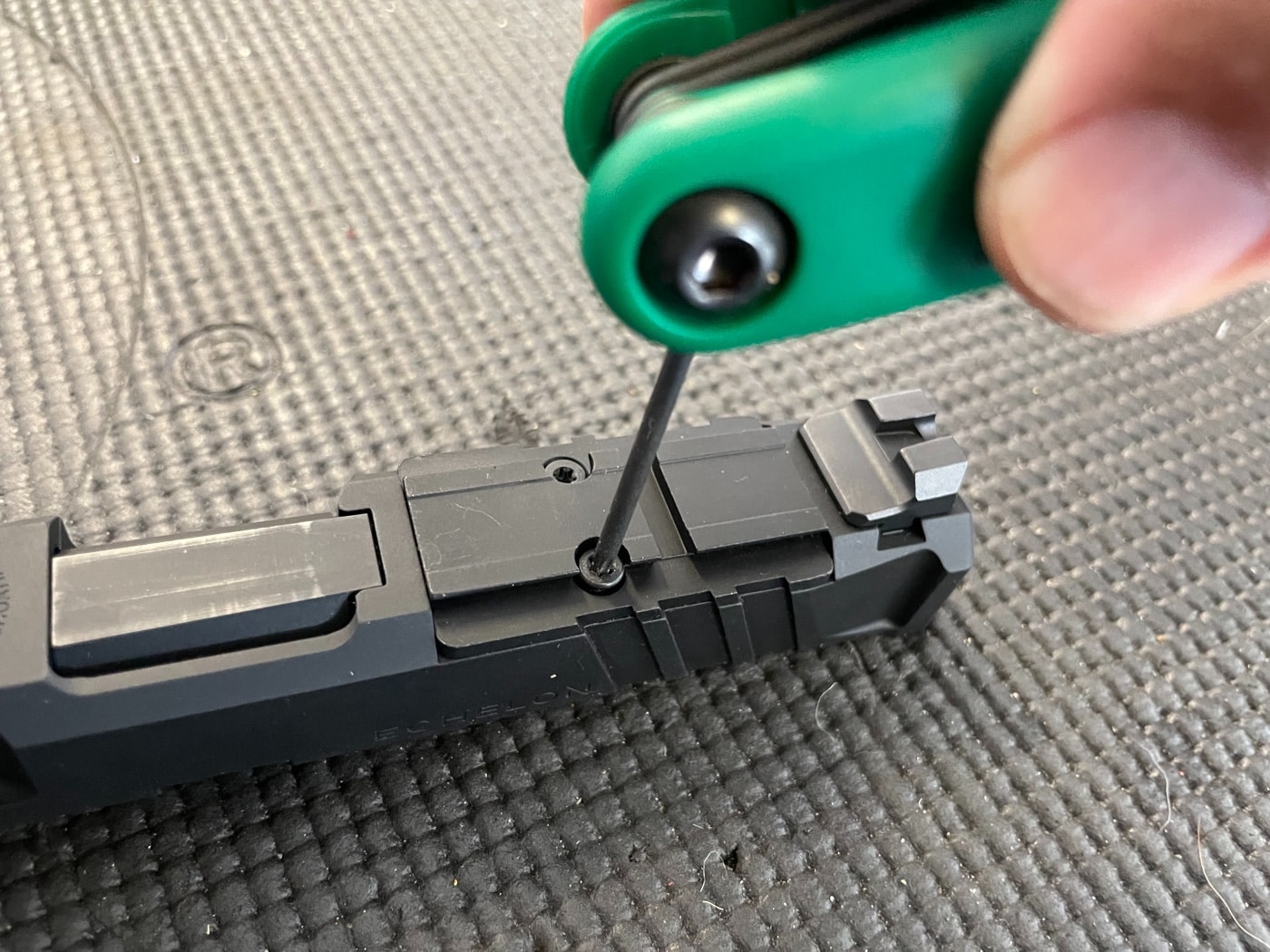
When I mounted it to the SAINT Victor, I used an Aimpoint ACRO QD mount. I used the back-up iron sight (BUIS) on the carbine to align the red dot. I noted that the ACRO co-witnessed perfectly with the BUIS.
On the Echelon, I used the Springfield Armory Variable Interface System adapter plate for the ACRO and initially adjusted the dot to sit above the front sight, and then tweaked it from there. The factory sights on the Echelon do not co-witness with the ACRO, so you will need to install higher sights if you do want this feature (Springfield sells taller sights that will co-witness with the ACRO, by the way).
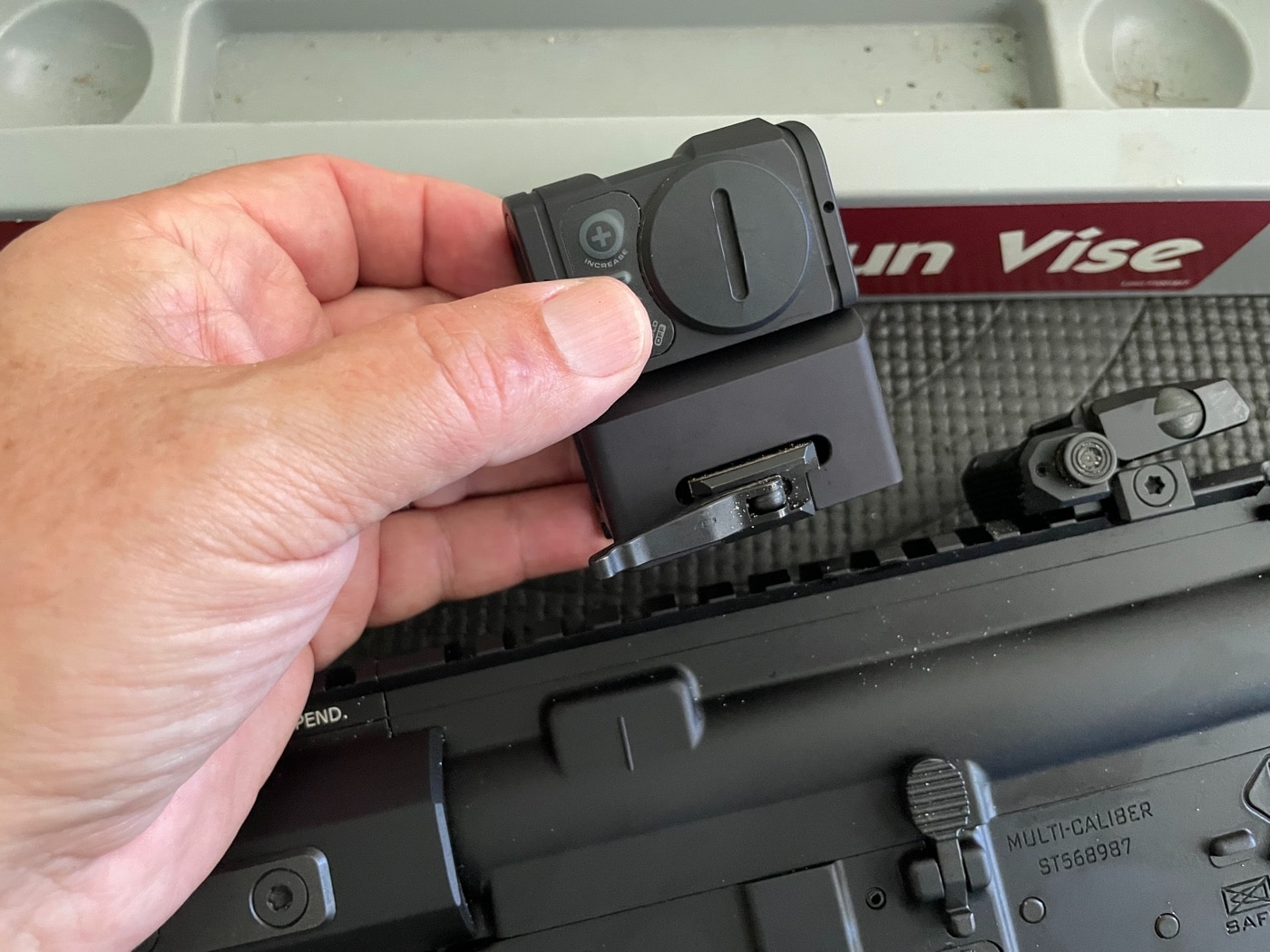
The adjustment directions on the windage and elevation dials are clearly marked so there is no guesswork. You need to use a Torx T10 tip to make these adjustments. Personally, I’d prefer a wide slot to use the rim of a cartridge to adjust the sight. However, you will likely just adjust the dot once and leave it alone.
Aimpoint and Echelon Pistol in Action
I used Federal American Eagle 115-gr. FMJ ammunition in both platforms. I zeroed the ACRO P-2 on the Echelon at 25 yards using a rest and shooting five-shot groups. My best was 1.3”, and my average was 1.5”.
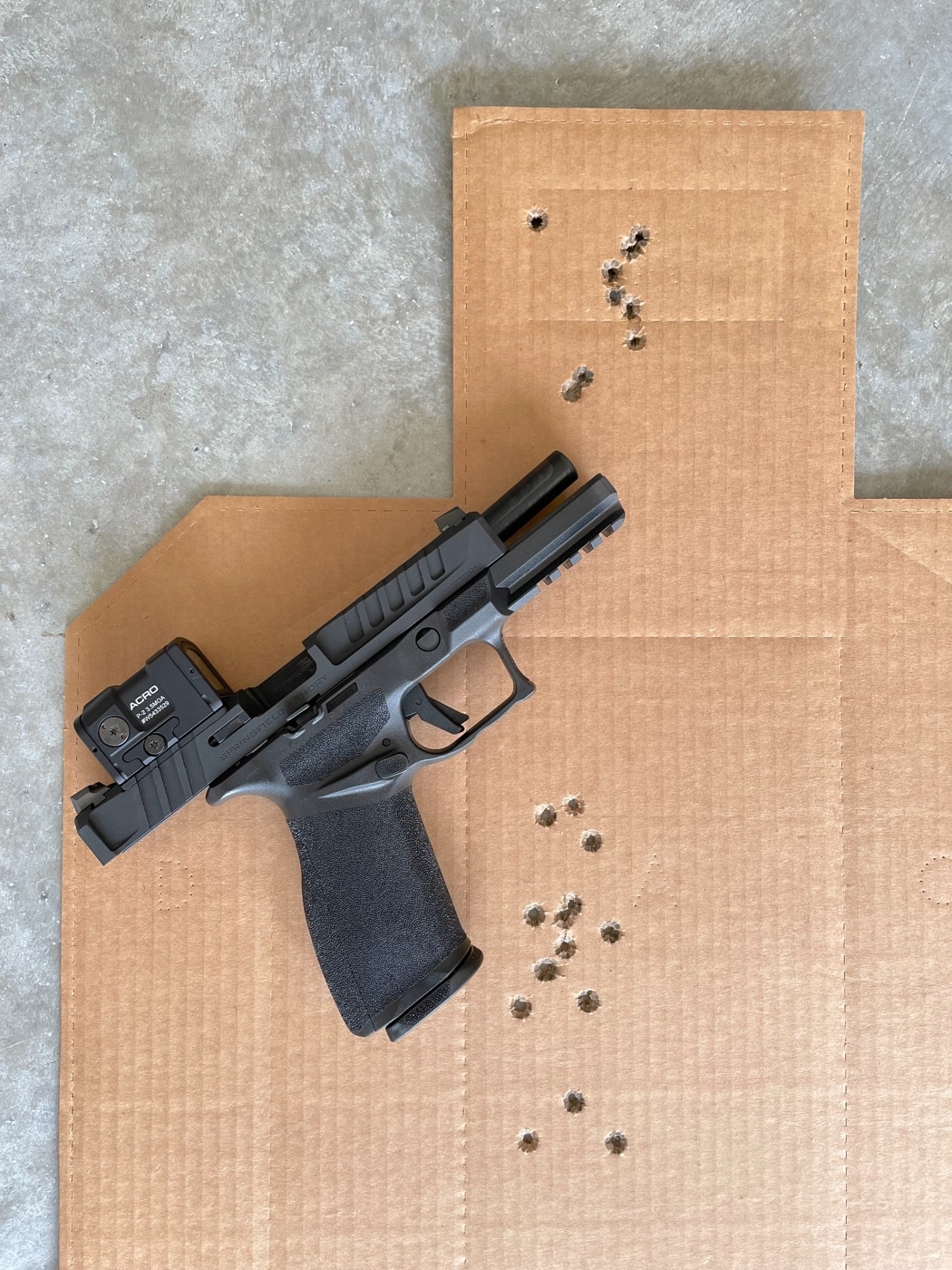
Running a bunch of failure drills at 7 yards, I found the first two shots to center of mass were fast and I could easily keep them in the zone shooting at my upper limit of speed. The dot was fast to acquire for the first shot and easy to find and pick up after recovering from the recoil for the second shot.
The ACRO is parallax free, which means the dot is always parallel to the bore. In layman’s terms, this means if you see the dot and it’s on target, you can take the shot. The dot does not need to be centered in the optic.
I tortured the optic by racking the slide using the ACRO against the side of the bench. I also grasped the ACRO like a handle to rack the slide. It did not faze the ARCO — it continued to work exactly as it should.
After pumping a few hundred rounds through the Echelon, I checked the ACRO’s clamp to see if it loosened. It was tight. Now on to the carbine.
[For additional information on this pistol, read Massad Ayoob’s Springfield Echelon gun review.]
Combining the ACRO P-2 and SAINT Victor 9mm Carbine
I zeroed the SAINT Victor 9mm carbine at 25 yards and worked my way out to 50 yards. At 50 yards, the red dot nearly covered the 6” black bullseye. Using a rest and the crisp, flat blade of the SAINT Victor’s trigger, it was easy to squeeze out a best five-shot group that measured 1.8”. Average was 2.1”. At 25 yards, I used a D-1 style tombstone target. It’s a plain target with perforations that are difficult to see at distance. I shot this target rapid fire, off-hand to get a feel for how the ACRO P-2 would perform without using a rest.
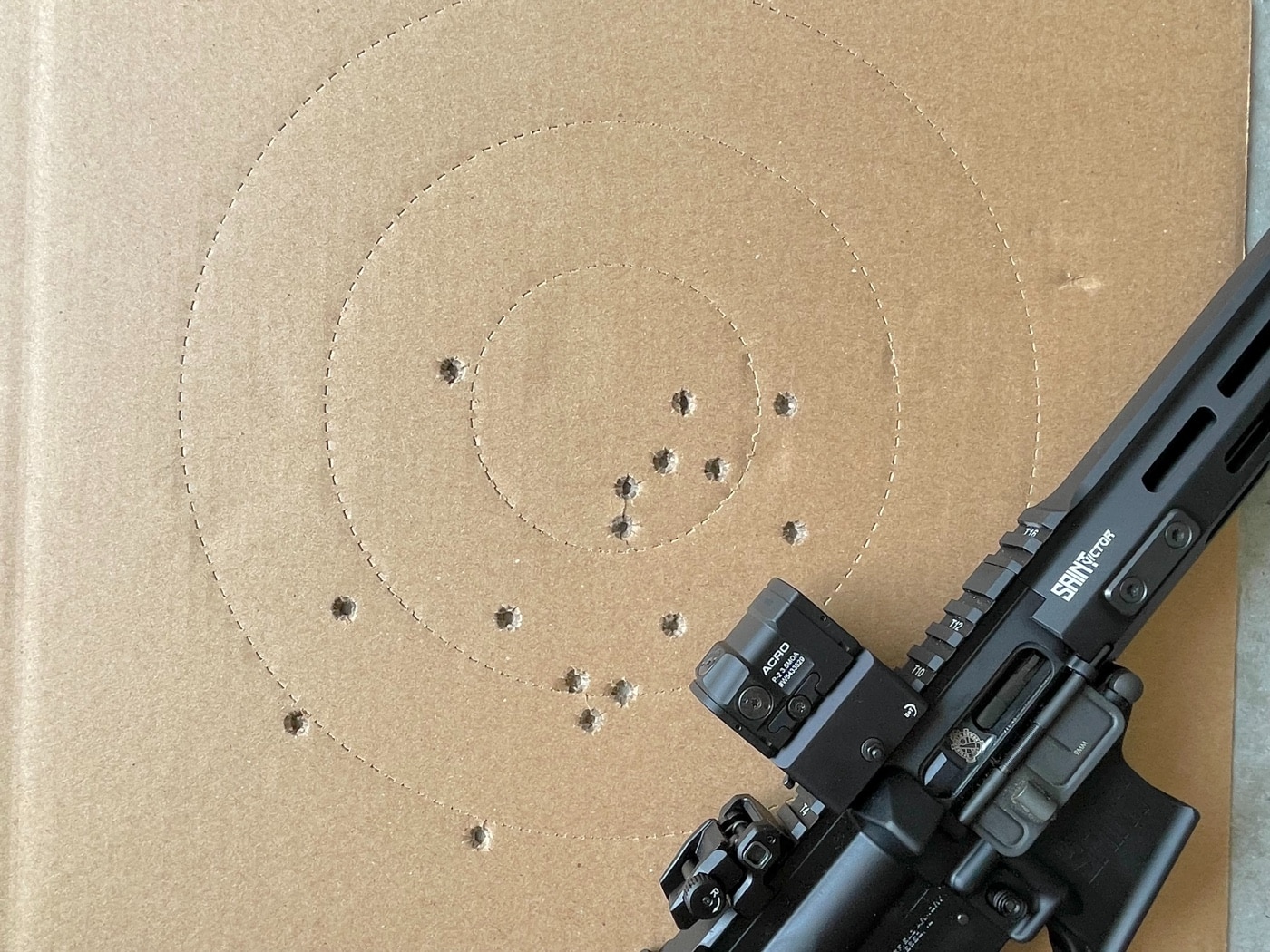
I shot at 10 and 7 yards and slightly adjusted my point of aim. The ACRO provided a smooth transition between target distances, and I noticed the speed of follow-up shots was getting faster and faster.
[Don’t miss our Springfield SAINT Victor 9mm review for more information about that semi-automatic rifle.]
Final Thoughts
When shooting with a red dot, you don’t need to go through the calculus that iron sights require. As a result, the ACRO speeds up your aim. It’s also rugged for those times when things go sideways. It’s a better tool to become faster and more efficient. And at an MSRP of $599, I think it is a steal. This is a very durable and capable optic for a very reasonable price.
Editor’s Note: Please be sure to check out The Armory Life Forum, where you can comment about our daily articles, as well as just talk guns and gear. Click the “Go To Forum Thread” link below to jump in!
Join the Discussion
Featured in this article
Continue Reading
Did you enjoy this article?

 32
32





